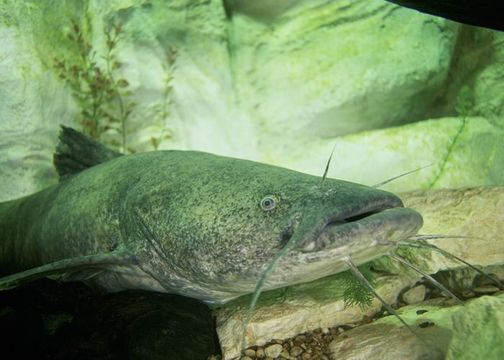Nutrition
The Slenderhead Darter or
Percina phoxocephala is a small fish by comparison, only reaching
the size of around 2.5 inches on average.(Becker,1983)
(Page,1971) Understandably, this size restriction also
restricts their diet to food that is manageable to be consumed.
Their diet is far from extensive due to this stipulation as well as
their narrow head- that doesn’t allow for much jaw extension. At
juvenile stages, the largest portion of their diet comes from mainly
midge larvae (many kinds of small fly larvae).(Becker,1983)(
The interesting thing is that although their size doesn’t seem to change too extensively; during the amount of growth that does occur from a young fish to mature adult, their diet appears to grow with them. As they become larger, they are able to ingest a more diverse composition of diet and take full advantage of this. (Becker,1983) Typically, the young Slenderheads, being at such a smaller size- restricts them to any insect larvae that are readily available and palatable. However, when they mature, the diet that was previously dominated by solely midge larvae increases to include a substantially larger group of immature mayflies and caddisflies as their sharp, minute teeth grow in and jaw and body size increases. (Smith,1979) Also, not as frequently eaten, but all the less an important nutritional factor, is the less eaten items such as: terrestrial insects, amphipods, fish eggs as well as water boatmen and dragonfly naiads.(Becker,1983) This information was found by close examination of the stomachs of the Slenderhead Darters. Smaller derbies was also found that was uncommon such as little stones and decayed plant material, but it is presumed to be accidental ingestion from the normal feeding cycle. (Becker,1983)
Another curious aspect that was found while studying the feeding habits of the Slenderhead is that at such a small size, one would assume that these fish would really take advantage of anything that is able to be eaten with such a small nutritional niche. However, there was evidence found that would show selective feeding habits taking place as well. The fish appeared to stay away from certain food groups for unspecified reasons. They avoided elmid beetle adults and plecopteran larvae. (Becker,1983)
The Slenderhead Darter was not found to be prey
to many of the predatory fish found in their habitats in the areas
studied. The one exception was that it was found in the stomach of a
flathead catfish. (Becker,1983)
Months that were found to show the most feeding, occurred in those just prior to spawning (which takes place in July and August primarily). (Becker,1983) (Smith,1979) (Paxton,1998) This is most likely due to make up for the time lost that was usually allocated to feeding, but turned to spawning periods that would take time and energy for the fish to keep it’s metabolism engaged. It was also found that the months that appeared to show the most feeding also were those prior to the colder winter months (November, February, and March). (Becker,1983) (Page, 1983)This is because in colder water the fishes metabolism slows down to conserve energy, they become less active and rely on stored energy because there are far less food sources during these months. This would explain why there was observation of emigration of this species from shallow, relatively quick flowing currents to fairly deeper channels as winter approached. (Becker,1983) (Wheeler, 1975) (Page, 1983)
This species, along with other species found in
the Genera Percina, are not tolerant of silt, turbidity (opaque
water, hazy with suspended substrate matter), and most importantly
pollution.
For information on other organisms like the Slenderhead Darter visit www.multipleorganisms.net Your content goes here.
Home -
Classification -
Habitat - Nutrition
Reproduction -
Form and Function -
References - About Us

